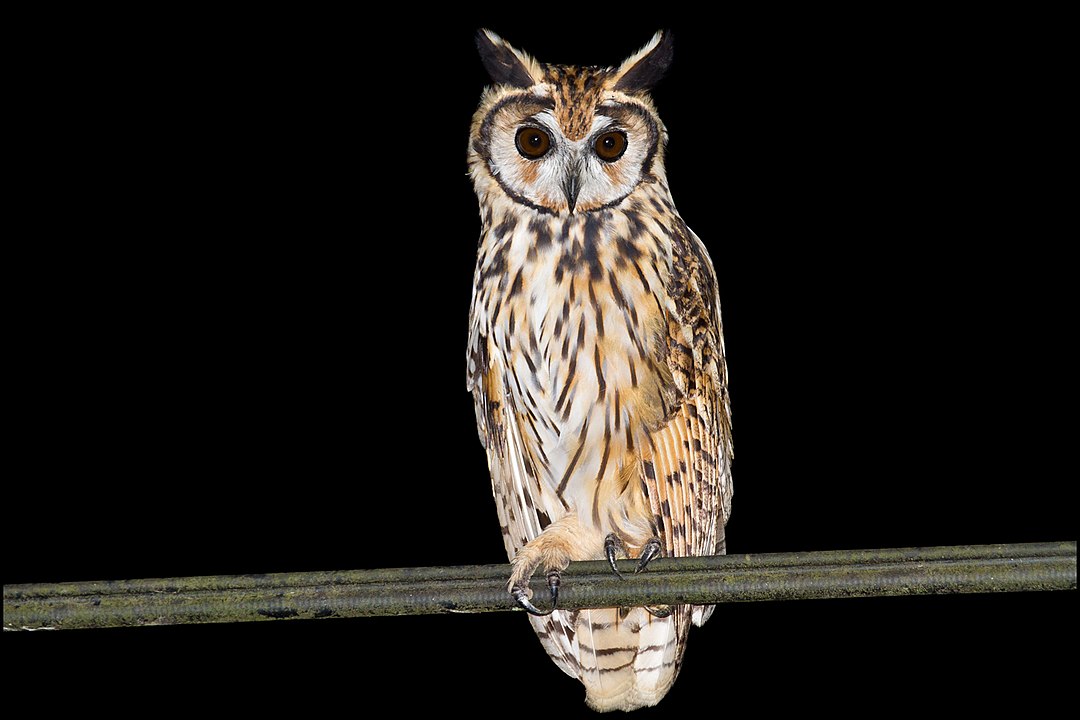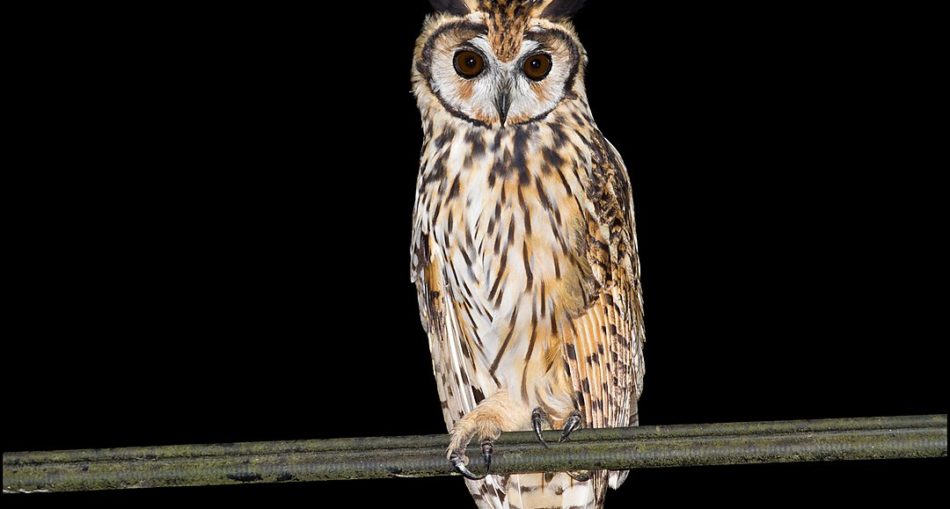The Striped Owl is noted for its soft cinnamon-coloured eyes and body. However, it often unnoticed in many places. Its range is not well known, perhaps because it is nocturnal and not easily seen, but the Striped Owl is native to parts of Central America and South America. These countries include Argentina, Belize, Bolivia, Colombia, Costa Rica, Ecuador, El Salvador, French Guiana, Guatemala, Honduras, Mexico, Nicaragua, Panama, Brazil, Guyana, Paraguay, Peru, Suriname, Trinidad and Tobago, Uruguay and Venezuela. The scientific name of the Striped Owl is Asio clamator. While it is sometimes placed in the Pseudoscops genus with the Jamaican Owl and in a monotypic genus, Rhinoptynx, it is however, a true species of the Asio genus.

The Striped Owl
– Photo By Chris Jimenez from CR – Striped Owl, CC BY-SA 2.0, https://commons.wikimedia.org/w/index.php?curid=36650542
Description Of The Striped Owl
The Striped Owl is a medium-sized bird about thirty to thirty-eight (30–38) cm in length. It weighs anywhere from three hundred and twenty to five hundred and forty-six (320-546) grams. Striped Owls have two large tufts of feathers, resembling ears and brownish white facial disc, outlined in black with soft cinnamon brown eyes. They also have short, white eyebrows, whitish lores, grey cere and a black bill. Compared to its close relatives, the Striped Owl have short wings. The upper parts of its body is a cinnamon colour, striped with white and black. Underparts are a light, brown-yellow colour with lots of black streaks on their breasts. A plain patch of black is found on their alulae. The tarsi and toes are cream in colour while their claws are sharp and black.
Scientific Classification of The Striped Owl
- Kingdom: Animalia
- Phylum: Chordata
- Class: Aves
- Order: Strigiformes
- Family: Strigidae
- Genus: Asio
- Species: A. clamator
Habitat Of The Striped Owl
The Striped Owl lives in numerous types of habitats including open grassy plains, savannahs, woodlands and marshes at sea level of five thousand and two hundred (5200) feet and above. However, Striped Owls seem to favour savannahs and semi-open grasslands with a small number of shrubs and copses. In suburban areas, you can find these owls in agriculture lands and pastures.
Interesting Tip
- The Striped Owl typically avoids dense forest in places like the Amazon Basin.
Diet Of The Striped Owl
Like all owls, the Striped Owl is a carnivore, preying on large insects, some reptiles and small birds such as thrushes, doves, house sparrows and grassquits. They also consume small mammals like bats, cavies, opossums and rats.
Interesting Tip
- These owls are able to catch prey about 0.7 times their own weight.
Reproduction Of The Striped Owl
The Striped Owl is typically monogamous, having a single partner however if food is plentiful, a male may mate with multiple females. Their breeding season extends from August to March of the next year. During the breeding season, courtship displays are done by the male to attract females. Striped Owls typically makes their nests on the ground in tall grass or in thick bushes. They lay about two to four (2-4) eggs which are solely incubated by the female for about thirty-three days. However, only one or two (1-2) owlets fledge after about thirty-five days after hatching. It is around this time they can eat by themselves. Owlets stay with their parents a few more weeks until they are able to fully take care of themselves.
Interesting Facts About The Striped Owl
- The Striped Owl is primarily nocturnal turning active as the sun goes down.
- They sometimes wait on perches for their next unsuspecting prey.
- Their wings make shallow but rapid beats keeping them in flight over open areas.
- During their flights over open landscapes, the Striped Owl would suddenly swoop in after its prey.
- In the day, the owls often roost in dense greenery or on the ground under vegetation, sometimes together during the non-breeding season.
About The Striped Owl
The Striped Owl can easily be distinguished by the tufts of feathers resembling ears and the unique patch of black on their wings. The birds are often found roosting alone, rarely with others of the same species. Their claws are well adapted to catch their prey in swift, felling swoops. You can find the Striped Owl in wooded areas countrywide so listen out for their shrill “Whoo-Whoos” calls.







